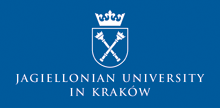Speaker
Description
Heavy-ion induced reactions offer unique opportunities to probe nuclear properties far from the ground state. The isospin flow during heavy-ion collisions is a subject of current investigation due to its link with the nuclear symmetry energy ($E_{sym}$) which is only partly known far from stability and ground-state conditions. More specifically, at incident energies between 10 and 100 AMeV, it is possible to investigate the thermal and mechanical properties of asymmetric nuclear matter. Also, they are of paramount importance in the astrophysical context for the description of the core-collapse of supernovae, as well as the formation and static properties of proto-neutron stars. The FAZIA program is aimed at investigating the evolution of isospin (i.e. the N/Z ratio) effects in heavy-ion collisions for excited (medium-light) quasi-projectiles (QP) formed in semi-peripheral collisions at Fermi energies. Various observables (e.g. isobaric ratios, mass fragment distributions, N/Z ratio of fragments, etc.) are calculated from the data obtained for the study of isospin effects. The experiment is based on the excellent isotopic separation capability of the FAZIA detector telescopes (Si-Si-CsI(Tl)), permitted by the combined use of the ΔE-E and PSA techniques and of fast digital electronics. In this contribution, I will report on some possible physics that can be studied from the FAZIA-PRE experiment performed at LNS (Catania) with 6 FAZIA blocks, focusing on the 48Ca + 27Al reaction at 40 MeV/A in comparison with systems such as 48Ca + 12C at 40 MeV/A and 48Ca + 27Al at 25 MeV/A.

